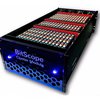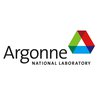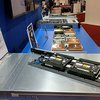Google researchers have produced an enhanced version of AutoML that outperforms human programmers on two industrial-strength neural networks.
Using the Titan supercomputer at the Department of Energys Oak Ridge National Laboratory (ORNL), a research team has developed an evolutionary algorithm that they claim can generate custom neural networks that match or exceed the performance of handcrafted artificial intelligence systems.
Los Alamos National Lab (LANL) has installed a 750-node HPC testbed using Raspberry Pi technology.
Hewlett Packard Enterprise has found a high-profile customer for its newly minted Superdome Flex in-memory computing platform.
Oak Ridge National Laboratory (ORNL) recently acquired the Atos Quantum Learning Machine (QLM), a quantum computing simulator that lets researchers create qubit-friendly algorithms. The deployment is part of a larger effort at ORNL to develop quantum computing technologies at the US Department of Energy.
Inspur has been tasked to build a one petaflop supercomputer for Central China Normal University (CCNU), which will use the system to host both traditional HPC applications and deep learning workloads.
The US Department of Energys (DOE) Argonne National Laboratory announced it will install a ThunderX2-powered cluster built by Hewlett Packard Enterprise (HPE) as part of a collaboration to expand the ARM ecosystem for high performance computing.
After largely ignoring the International Supercomputing Conference (ISC 2017) in Frankfurt this past June, AMD made good use of its time at SC17 in Denver last week to flesh out its high performance computing strategy and show off its latest EPYC CPUs and Radeon Instinct GPUs.
HPC market analyst firm Hyperion Research has released an online interactive tool that maps more than 750 high performance computing sites across the United States.
A handful of OEMs and other system builders have signed on to build high-performance servers using ThunderX2, Caviums newest 64-bit ARM chip for the datacenter.










